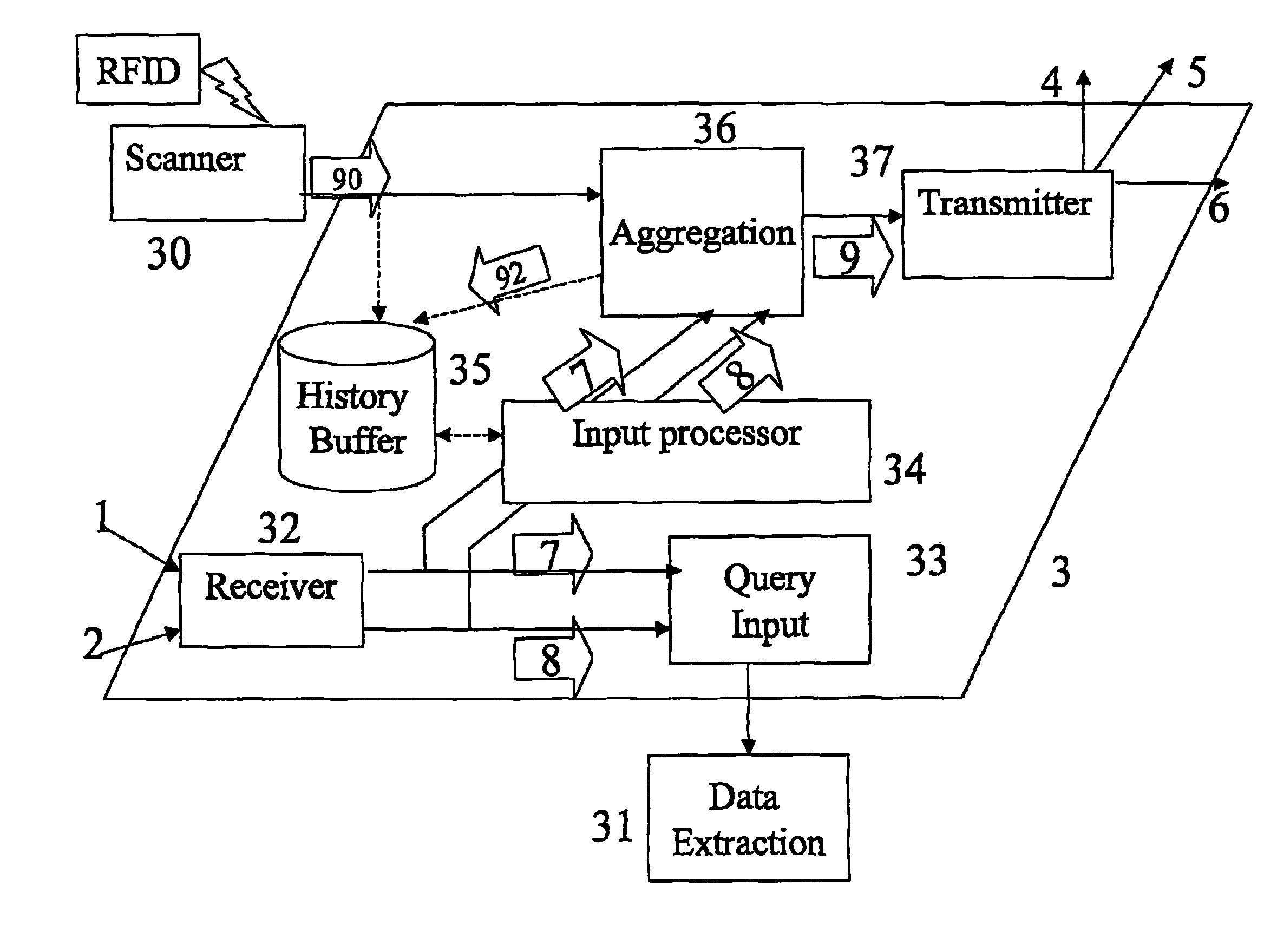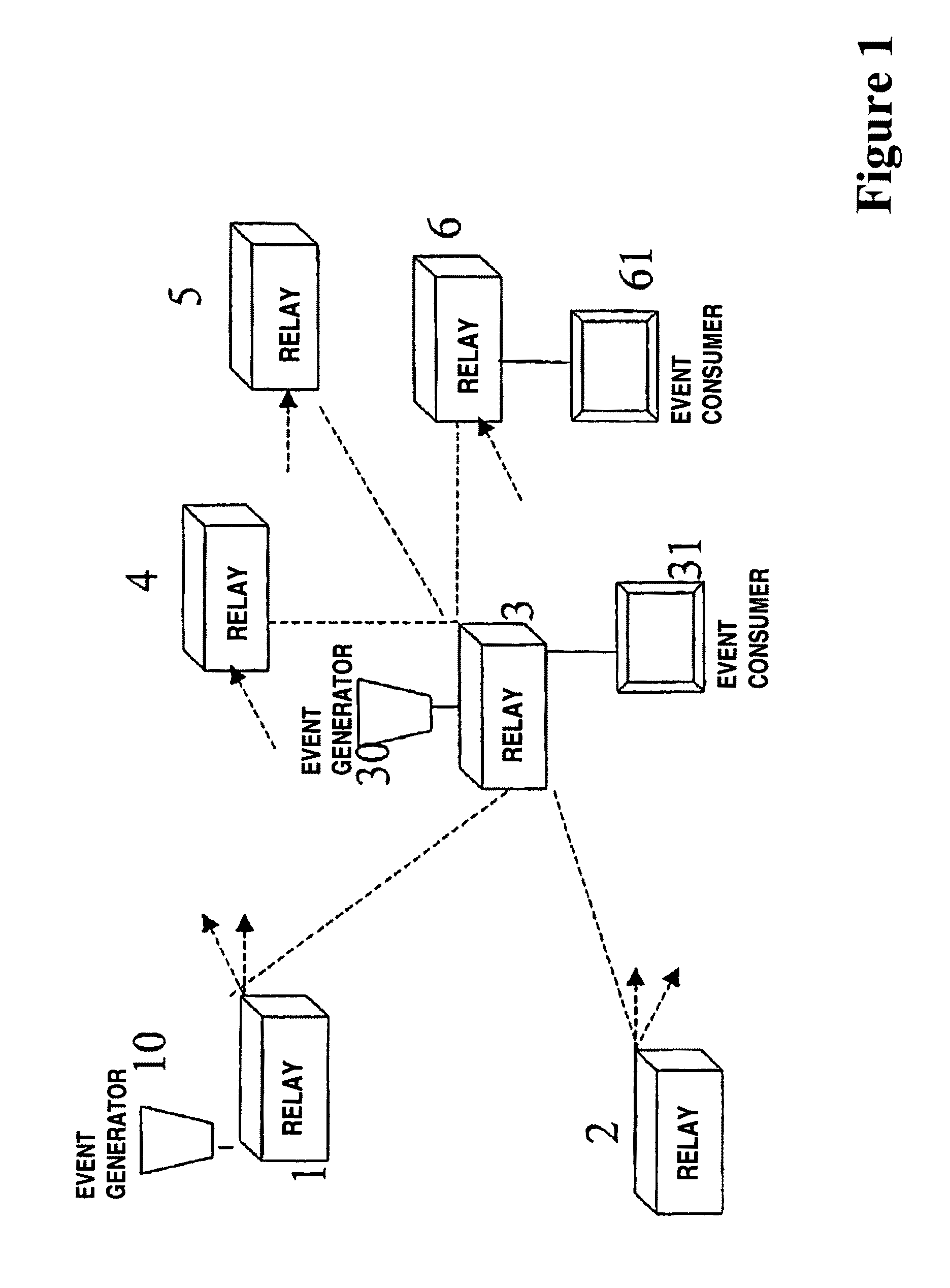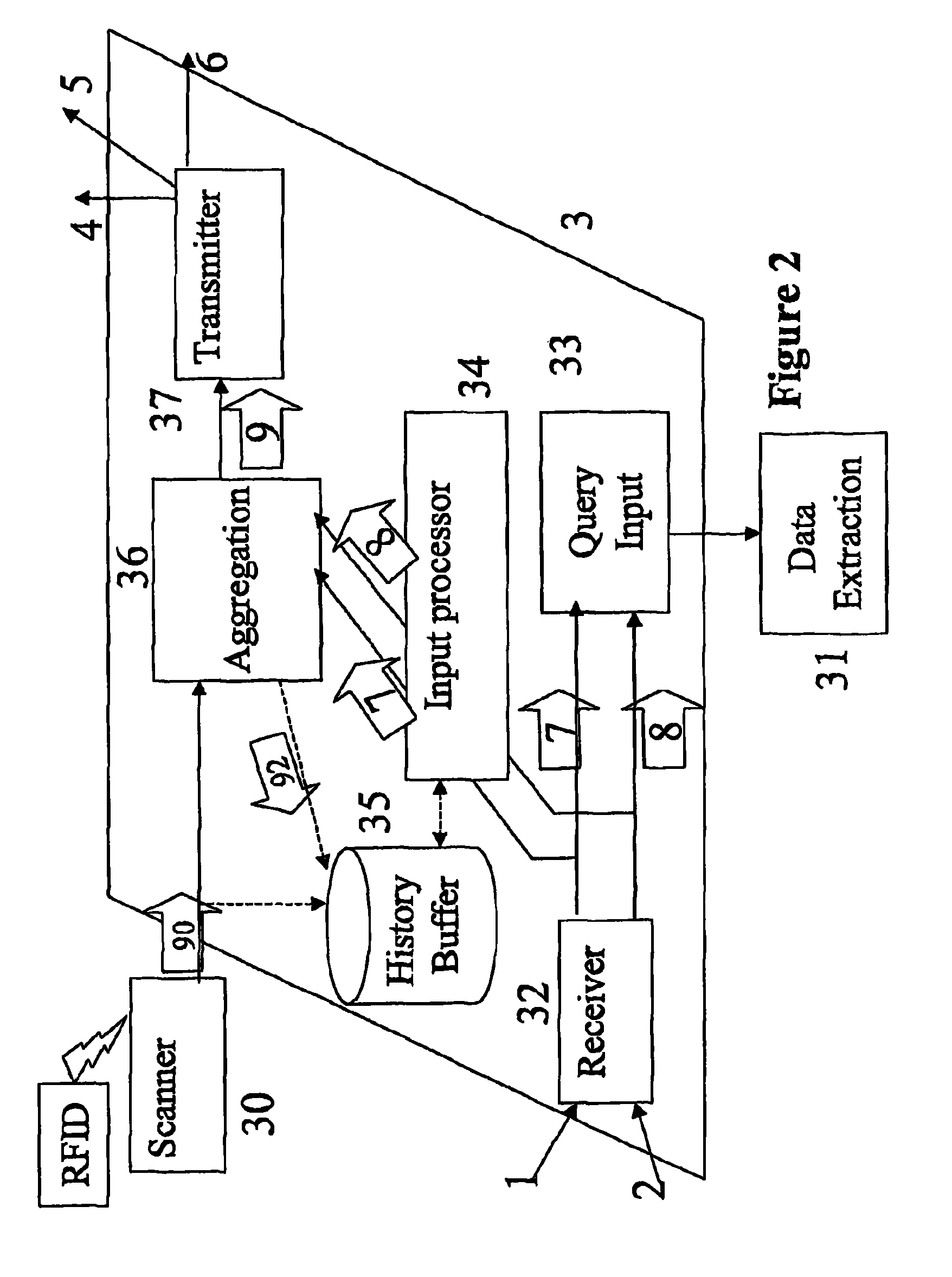Event notification network
- Summary
- Abstract
- Description
- Claims
- Application Information
AI Technical Summary
Benefits of technology
Problems solved by technology
Method used
Image
Examples
Embodiment Construction
of the Invention
[0003]This invention relates to communications networks for transmitting data, and in particular networks for conveying data that reports events detected by devices dispersed throughout an environment. Such devices may be used for monitoring natural phenomena such as atmospheric, oceanic or geological phenomena, or animal behaviour, or for monitoring human behaviour such as road traffic, inventory control, or monitoring the activities of vulnerable or untrustworthy people. As the devices are distributed throughout the environment to be monitored, this is known as “pervasive” computing technology.
[0004]2. Description of Related Art
[0005]Devices to perform such monitoring are readily available, such as sensor networks, RFID Tags and biometric scanners. An RFID (Radio Frequency Identification Device) is a small integrated circuit connected to an antenna, which can respond to an interrogating RF signal with simple identifying information. They are used in a number of sit...
PUM
 Login to View More
Login to View More Abstract
Description
Claims
Application Information
 Login to View More
Login to View More - R&D
- Intellectual Property
- Life Sciences
- Materials
- Tech Scout
- Unparalleled Data Quality
- Higher Quality Content
- 60% Fewer Hallucinations
Browse by: Latest US Patents, China's latest patents, Technical Efficacy Thesaurus, Application Domain, Technology Topic, Popular Technical Reports.
© 2025 PatSnap. All rights reserved.Legal|Privacy policy|Modern Slavery Act Transparency Statement|Sitemap|About US| Contact US: help@patsnap.com



